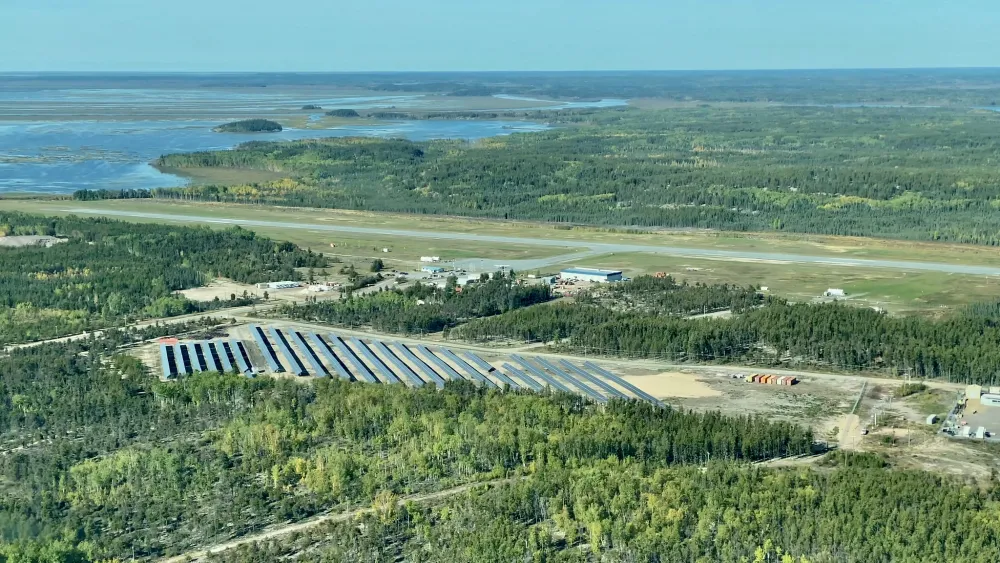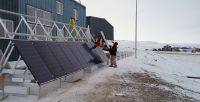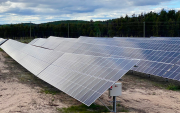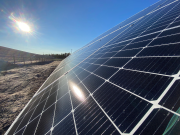This is the second publication in Climate and energy policy advancements: Eliminating diesel in Canada’s remote communities, a series providing insights, details and analysis on each of the specific policies we are advocating under our Renewables in Remote Communities (RiRC) program and the Indigenous Off-diesel Initiative (IODI).
The widespread adoption of renewable energy could displace the centralized system of generating and distributing energy to customers and provide opportunities to unlock a more decentralized (distributed) way of managing energy. But reducing reliance on diesel, and empowering communities to produce their own energy, requires removal of existing barriers that prevent deeper levels of penetration of renewable energy in remote diesel microgrids. And it depends upon the support of governments, utilities, communities and consumers for the shift from centralized microgrid systems to more distributed energy generation.
Centralized generation involves large-scale infrastructure that delivers electricity to consumers who may access it some distance away from the generating source. Conversely, distributed generation utilizes smaller and more flexible power generation technologies, located closer to the end-users. Most distributed energy resources take advantage of renewable sources of energy like wind and solar (usually coupled with battery storage systems) and are typically connected to a microgrid operated by a utility. This distributed means of providing power suits the geographic size and off-the-grid status of remote communities.
A core function of a power utility is to ensure a stable and reliable supply of power to customers. However, the intermittency of renewables impacts this mandate. And without a policy governing renewable energy integration, utilities are free to set any integration limit they perceive to be safe and low risk for their service. To avoid disruptions, they generally take conservative approaches that are deemed to improve reliability rather than setting limits that would allow the integration of more renewables into the grid. For example, renewable energy integration limits in remote communities vary throughout the northern territories but go no higher than a 20% intermittency allowance.
Pushing the limits: technological advancements and approaches
Smart, integrated energy systems could help utilities increase their renewable energy integration limits. Smart, in this case, refers to various technological advancements (like battery storage systems and smart meters) as well as approaches (like energy-sector coupling and local energy-market transactions) that allow more renewables into the local grid without compromising stability or reliability. Examples of these smart, integrated energy system projects in Canada include:
- The first Canadian smart remote microgrid project, in Hartley Bay, B.C. Led by CanmetENERGY between 2007 and 2013, this project aimed to install smart energy management and monitoring solutions (including demand response system installation) to facilitate a high integration of renewables into remote microgrids. The success of this demonstration project led to a better understanding of the benefits of smart microgrid projects in other remote communities.
- Kiashke Zaaging Anishinaabek (KZA) solar PV and battery micro-grid, in Gull Bay, Ont. Developed and commissioned in 2019 and led by Gull Bay First Nation, this microgrid is showcasing innovation technology and integration with a 300 kW solar PV array, 300 kWh battery storage and a microgrid controller. The system is helping KZA reduce diesel usage by 110,000 litres per year.
- Canada’s largest remote community solar farm, in Fort Chipewyan, Alta. Launched in the fall of 2020, this Three Nations Energy (3NE) solar farm project is jointly owned by the Athabasca Chipewyan First Nation, the Mikisew Cree First Nation, and the Fort Chipewyan Metis Association. Together, this 3NE 2.35 MW solar PV project and an ATCO 600 kW solar PV project (completed in 2019) are expected to displace approximately 25% of annual diesel usage and result in high penetration of renewable energy. This solar PV farm also includes a 1.5-MWh battery storage system installed by ATCO.
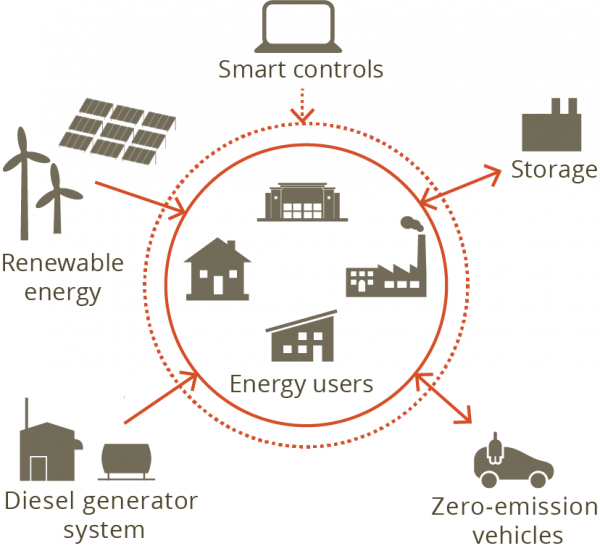
Energy sector coupling could play an important role in increasing renewable energy integration limits in remote communities. Energy sector coupling refers to increasing interconnections between different energy-consuming sectors — buildings (heating and cooling), transport, industry, and electricity — allowing them to share energy sources, thus increasing renewable energy penetration levels and energy security. By focusing on opportunities that exist at the intersection of energy sub-sectors, integrated energy networks can uncover pathways to deeper decarbonization of the energy system. Here are some examples of energy-sector coupling:
- The electric hydro-powered heat pumps of the Heiltsuk First Nation in Bella Bella, B.C.
- The Yukon Conservation Society pilot project launched to electrify the heating sector by installing electric thermal storage units in Whitehorse which shifts energy demand away from peak times
- The ambitious Yukon climate change strategy integrates transport and electricity sectors with a target of putting 200 times more electric vehicles on the road by 2030
Meaningful progress to reduce diesel consumption requires pushing the technological boundary of each traditionally siloed energy sub-sector toward a smarter and more integrated energy system.
Another emerging approach to increase renewable energy integration is the use of microgrids in peer-to-peer (P2P) energy trading. According to the International Renewable Energy Agency (IRENA), P2P trading increases renewable energy integration and provides innovative solutions to make better use of energy resources that have been distributed into the local grid. Some examples include:
- LO3 Energy operates the Brooklyn microgrid in the New York suburb, allowing energy players to generate, store, and trade energy at the local distribution level.
- IRENA’s Innovation Landscape Brief report on P2P trading shows that Australia, Bangladesh, Columbia, Germany, Japan, Malaysia, Netherlands, and the UK have also started trials of P2P models.
- A few studies have also been conducted in Canada, including in Alberta and Hydro Ottawa’s MiGen’s Transactive Grid project.
All of these could provide inspiration for similar P2P energy trading in Canadian remote communities.
Better policy will increase integration
Improved policy could unlock the benefits of increased renewable energy integration. But the tension between the mandate of the provincial and territorial utilities to provide reliable and safe power and the federal government’s target to eliminate diesel dependence in northern and remote communities by 2030 will not quickly be resolved. And an incomplete picture of the long-term implications of these two approaches can be costly considering the huge investments and the long time spans that energy transitions require. Bringing policies with more ambitious renewable integration limits into the overall collection of energy policies will be necessary to make meaningful progress.
Policies to promote renewable energy integration in remote communities should strive to unleash innovation in smart, integrated energy systems. Policies requiring utilities to perform grid impact studies would be beneficial to test the validity of perceived trade-offs between grid stability, safety, and reduced diesel dependence. They would also allow higher renewable integration limits that are consistent with all three objectives. Without such due-diligence requirements, utilities are likely to continue to take a conservative approach to renewable energy integration limits. The grid impact study results should be available to each community wanting to develop its own clean energy projects. This approach encourages data transparency in addition to creating synergies that push utilities and communities to work together to find viable solutions in a collaborative and responsible manner without compromising grid safety and reliability.
Finally, the multitude of innovations that are capable of boosting the share of renewable energy in microgrids should be reflected in Canada’s robust energy policy framework. Among other objectives, this framework should enable a shift to a more appropriate utility business model that addresses both the risks and opportunities of increased renewable energy integration for remote communities.
Next up: A closer look at the role of Power Purchase Agreement (PPA) rates and contracts in advancing renewable energy projects in remote communities.
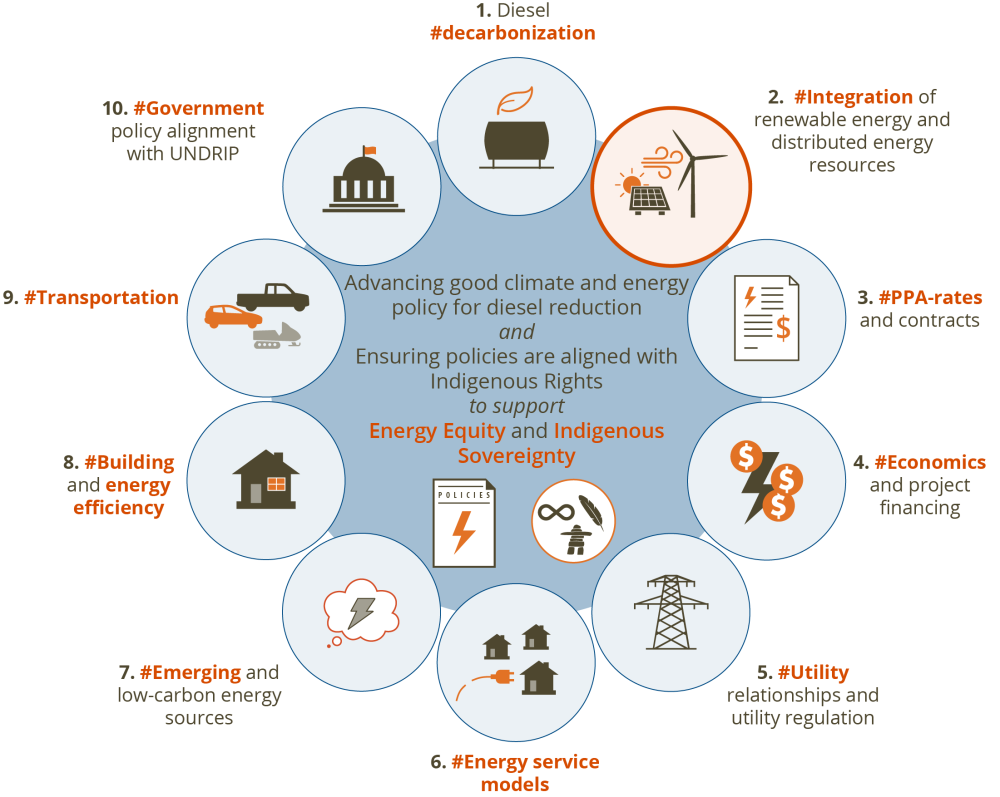
Climate and energy policy advancements: Eliminating diesel in Canada’s remote communities
Publications in this series:
- Rethinking energy policy in Canada’s remote communities
- How to boost renewable energy integration in remote communities
- What’s a fair and equitable price for renewable energy in remote communities?
- Better government policies will unlock the cash remote Indigenous communities need for clean energy
- Reducing emissions from diesel generators in remote communities
- When business-as-usual is a barrier to clean energy
- From diesel dependency to energy empowerment
- Three clean energy options that could help replace diesel
- Remote communities transitioning to clean energy need better housing
- How remote communities should be included in the push to electrify transportation
- Government action on UNDRIP and the clean energy transition

